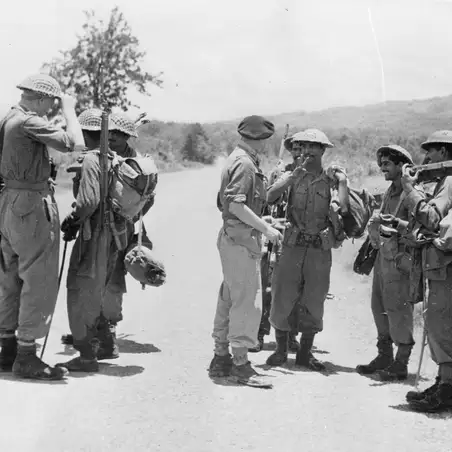The reuniting of communities, families and friends would be a long process and for many the end of the war did not mean the end of their service.
Although societies across the globe are slowly emerging from lockdown with families and friends beginning to reunite, many still face a long wait to be reunited. The end of WW2 did not lead to the immediate reunification of families and friends and for millions of service personnel from Britain and the Commonwealth it would take months and years to be reunited with loved ones.
For many demobilisation would take years, with some service personnel returning to families and homes they hadn’t seen for more than five years.
For others there was the release from POW camps in Europe or the Far East and their long journey to recovery.

4.2 m
There was a long process of demobilisation for Commonwealth forces too.
Thousands returned home with injuries, both physical and psychological.
For many these would take years to recover from as they tried to find their place back into old communities, or in the case of some Commonwealth forces into entire new nations.

300 K
Over the course of the war approximately 3 million, mainly children, had been evacuated from British cities to the safety of towns, villages or Commonwealth states like Australia.
There were approximately 40 million refugees in Europe at the end of the war and an estimated 60 million worldwide.
This included hundreds of thousands of Prisoners of War, millions of displaced persons, and thousands of survivors of Holocaust extermination camps - all trying to reconnect with families, communities, homes and nations.
Geoffrey Hather was a navigator in the RAF when he was captured in Germany in 1944, and spent nine months in POW camps.
Describing his first few week back home, he said:
I don’t think you ever got back to real normality or what was known as real normality.
“If you can imagine having been restricted to a compound surrounded by barbed wire for some months and then suddenly you arrived home and now you can open any door and go through it without having somebody with a rifle say you can’t.
“I remember the first morning I got back. I opened the front door and I went to the garden gate but nothing would have made me go through it and I walked back in.”

.jpg?sfvrsn=1d53bbf6_2&method=CropCropArguments&width=1600&height=847&Signature=93512A765879B8B95A75D0D596DDA526ACD440E1)
.jpg?sfvrsn=2eb46697_0&method=CropCropArguments&width=600&height=450&Signature=183033ABB0301A061FF126E62055E97DC5C96E36)
.jpg?sfvrsn=45b6757_2&method=CropCropArguments&width=600&height=450&Signature=0B73F1DF3DD562C7F89A64601EBA887BE89EAAE5)
.jpg?sfvrsn=a011a3c8_2&method=CropCropArguments&width=600&height=450&Signature=0EE2A3EC558D5B88DA2AAEC466936E1B6D202D63)


.jpg?sfvrsn=f29cb141_6&method=CropCropArguments&width=452&height=452&Signature=B26641313DB7254B1153CA11344D274532223943)
